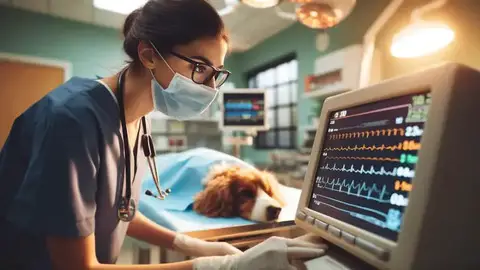
Analogies of Veterinary Patient Monitoring: Invasive is to non-invasive as ETCO2 is to?
Course Details
In this segment of a three-part play on word series, we compare non-invasive patient monitoring methods to their invasive counterparts. Patient monitoring is crucial to successful outcomes. A dedicated, trained veterinary professional who understands the application, mechanics and limitations of each monitoring device is best positioned to recognize complications. This session focuses on the use of capnography for obtaining end-tidal carbon dioxide (ETCO2) and counterpart, partial pressure of carbon dioxide in arterial blood (PaCO2). Explore other vital information gleaned from the capnograph including basic analysis of the capnogram. Finish confident with a greater understanding for the limitations of the capnograph in intubated patients and the value of obtaining blood gas analysis to evaluate partial pressure of carbon dioxide of the blood in critical patients. This lecture has been RACE Approved for 0.5 CE hour for veterinarians and veterinary technicians.
Learning Objectives:
- Understand the relationship between ETCO2 and PaCO2 through the review of limitations of non-invasive ventilatory monitoring with capnography as it compared to its invasive counterpart, blood gas analysis.
- Review the importance of monitoring ventilation in intubated patients including review of the capnogram and types of capnography units (i.e. side stream and mainstream).
- Explore the future potential these values comparing ETCO2 with PaCO2 and how that may influence your patient management.
- Reinforce the value of invasive monitoring counterpart, arterial blood gas analysis to evaluate the partial pressure of carbon dioxide of arterial blood in critical patients.